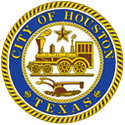Major Thoroughfare & Freeway Plan (MTFP)

Annually, the City produces the Major Thoroughfare and Freeway Plan (MTFP). In compiling the MTFP, the City listens to developers and neighborhoods about such issues as congestion, mobility and future development plans. In that plan, the city identifies sections of roadways (either thoroughfares or major collectors) that are in need of expansion, either by lengthening or widening. The plan serves as notice to the public for developing land adjacent to the identified roads.
The plan does not address the construction schedule for roadway projects. Inquiries about roadway construction should be directed to the City's Public Works and Engineering Department.
2021 Major Thoroughfare & Freeway Plan Amendment Requests
MTFP Policy Statement (last amended on March 2015)
2020 MTFP & Transit Corridor Street Hierarchy Classification Table
Major Thoroughfare and Freeway Plan Minimum Right-of-Way Width by Street Classification
Street Hierarchy System
Ever wonder how the City decides which roads to widen, how to set speed limits, and how to set building setbacks? The answer is a Street Hierarchy System.
The system uses several factors to classify streets into one of four categories:
- Length of road
- Existing and projected traffic volume
- Character of adjacent properties
- Possibility of expansion, including manmade and natural barriers
- Need to preserve thoroughfare corridors
- Classifications and descriptions
Descriptions
Major Thoroughfares are divided into two classifications; Principal Thoroughfare and Thoroughfare. Major Thoroughfares are those streets designed for fast, heavy traffic, and are intended to serve as traffic arteries of considerable length and continuity throughout the community. The location of these streets is based on a grid system covering the area within the City’s jurisdiction, which provides a theoretical spacing of Major Thoroughfares at one mile intervals.
1) Principal Thoroughfares are public streets that accumulate traffic from collector streets and other Major Thoroughfares for distribution to the freeway system. They may be a highway and typically provide a high degree of mobility for long distance trips. Principal Thoroughfares generally serve high-volume travel corridors that connect major generators of traffic such as: the central business district, other large employment centers, suburban commercial centers, large industrial centers, major residential communities, and other major activity centers within the urban area.
2) Thoroughfares are public streets that accumulate traffic from Collector streets and local streets for distribution through the thoroughfare and freeway system. These streets distribute medium to high volume traffic and provide access to commercial, mixed use and residential areas.
Transit Corridor Streets are a rights-of-way or easements that METRO has proposed as a route for a guided rapid transit or fixed guideway transit system and that is included on the City’s MTFP.
Collector Streets are public streets that accumulate traffic from local streets for distribution to the Major Thoroughfare streets. A Collector Street may be a Minor Collector or a Major Collector. Collectors Streets are designed to provide a greater balance between mobility and land access within residential, commercial, and industrial areas.
1) Major Collectors are public streets that accumulate traffic from local streets and Minor Collectors for distribution to the Major Thoroughfare. A Major Collector street may have commercial, residential or have mixed uses abutting.
2) Minor Collectors are public streets that accumulate traffic from local streets for distribution into a Major Thoroughfare or a Major Collector. A Minor Collector typically has residential uses, however it may also serve commercial or mixed uses.
Local Street are public streets that provide access to individual single-family residential lots, provide entry and exit to the neighborhood, and provide connectivity to collectors and thoroughfares. In short, all other streets not previously listed are considered local streets that function to provide access from individual properties to the thoroughfare network.
For more information about the MTFP or Street Hierarchy, please contact the Transportation Planning Division at 832-393-6660 or mobility.planning@houstontx.gov

